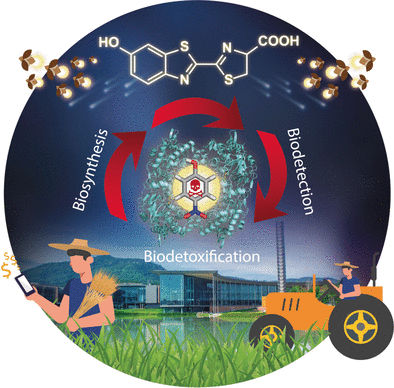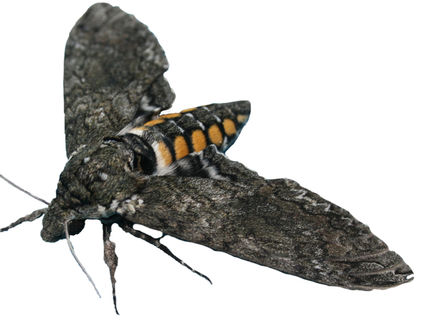Analysis and Detoxification in One Step
A smart chemoenzymatic method detects and removes hazardous phenols
Advertisement
Many industrial and agriculture processes use chemicals that can be harmful for workers and the ecosystems where they accumulate. Researchers from Thailand have now developed a bioinspired method to detect and detoxify these chemicals in only one step. As they report in the journal Angewandte Chemie, a combination of two natural enzymatic reactions convert harmful chloro- and nitrophenols into the substance that causes the characteristic glowing of fireflies: luciferin.

© Wiley-VCH
Oxygenated benzene or phenol molecules are part of the chemical structure of many organic substances, from lignin and tar, to pharmaceuticals, dyes, and herbicides. Phenol-derived compounds are added to plastics as plasticizers. Although many of these chemicals are not harmful as such, pesticides, herbicides, or flame retardants may degrade to cancerous and stable nitrophenols and halogenated phenols that accumulate in the workplace or in fields.
Phenolic compounds are usually detected with techniques such as mass spectrometry. Biochemist Pimchai Chaiyen at the Vidyasirimedhi Institute of Science and Technology, Thailand, and colleagues, have now developed a more practical approach. They combined an established biodetoxification method with chemical and biochemical conversion schemes to detect and remove contaminants in one step. The key product is witnessed widely on summer nights in gardens and in the countryside: luciferin—the bioluminescent compound produced by fireflies.
Nature has developed several mechanisms to degrade and detoxify chemicals. Bacteria use specialized enzymes to dehalogenate phenols and convert them into oxidized compounds called benzoquinones, which can be metabolized by organisms. Enzymes called dehalogenases or mono-oxygenases have thus been used in industry for biological detoxification.
Chaiyen and colleagues went further than pure detoxification and coupled the enzymatic process with a method to convert the benzoquinone product into luciferin. “The developed chemoenzymatic cascade offers additional value: it provides biodetection technology for nitrophenols and halogenated phenols,” they claim. The chemoenzymatic cascade entails conversion of the product from the first enzymatic conversion step, benzoquinone, into luciferin in a second step, but within the same reaction vessel.
To achieve conversion of benzoquinone into luciferin, the authors added the natural compound cysteine to the reaction mixture. They then included a third step in the reaction sequence and detected the luciferin product through the glowing reaction caused by an enzyme called luciferase, which is also present in fireflies. The authors also proved that their detoxification–luciferin production and detection scheme was robust and capable of quantitative conversion of hazardous phenols into luciferin.
Simultaneous detoxification and luciferin production may offer additional benefits. Luciferin is a highly valued compound in biomedicine. The authors point out that their approach is a remarkably straightforward and useful strategy for analysis and detoxification of the workplace in one step, and it can be used to synthesize luciferin from waste chemicals.























































